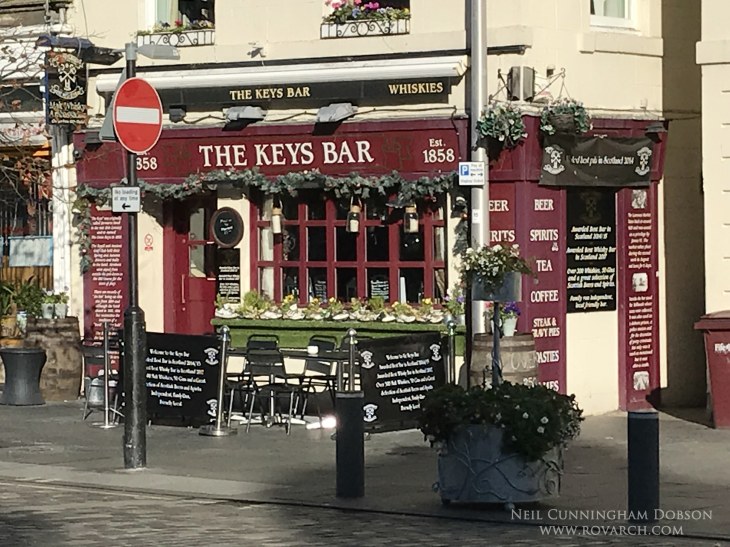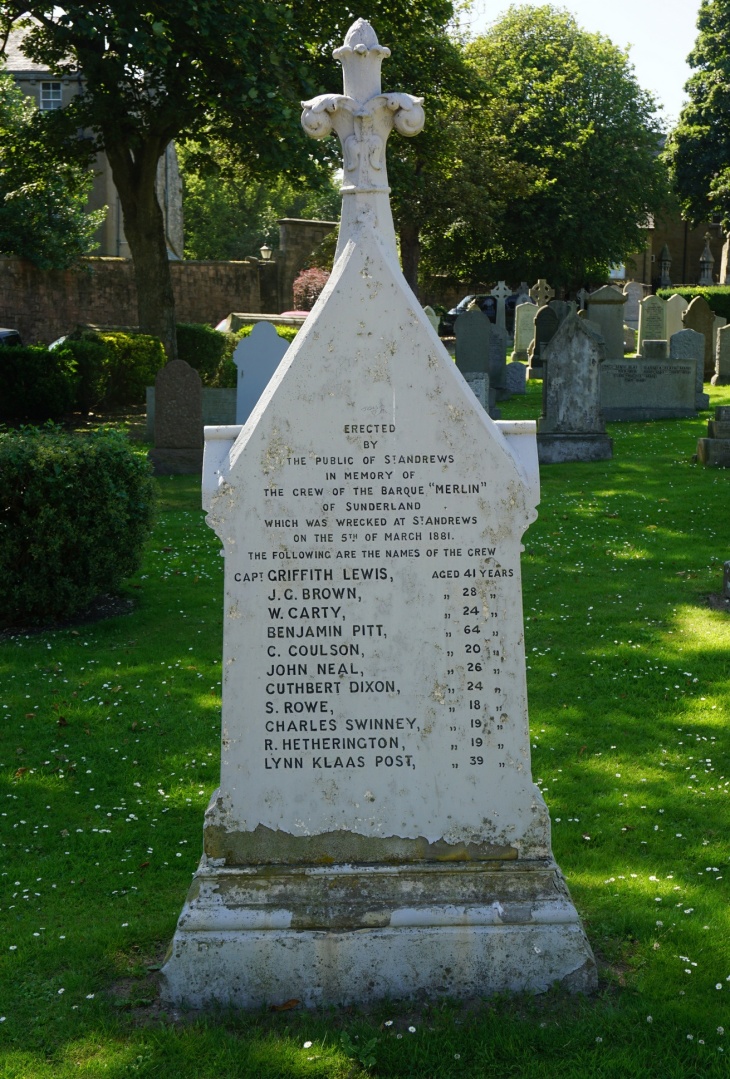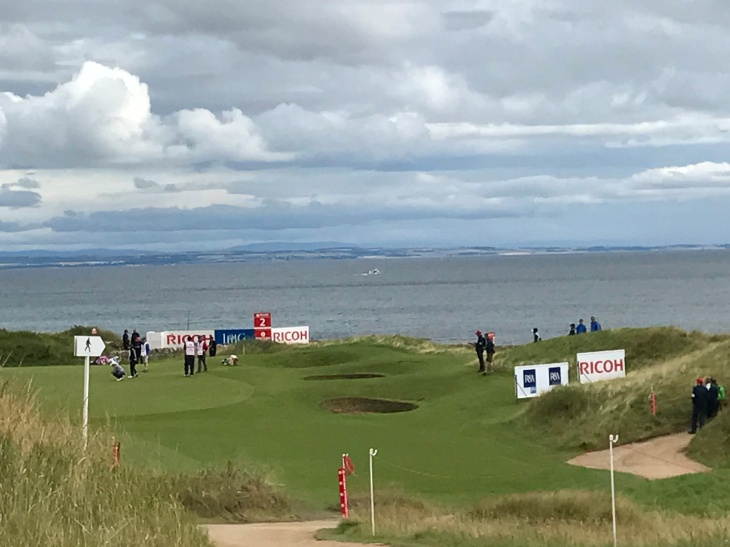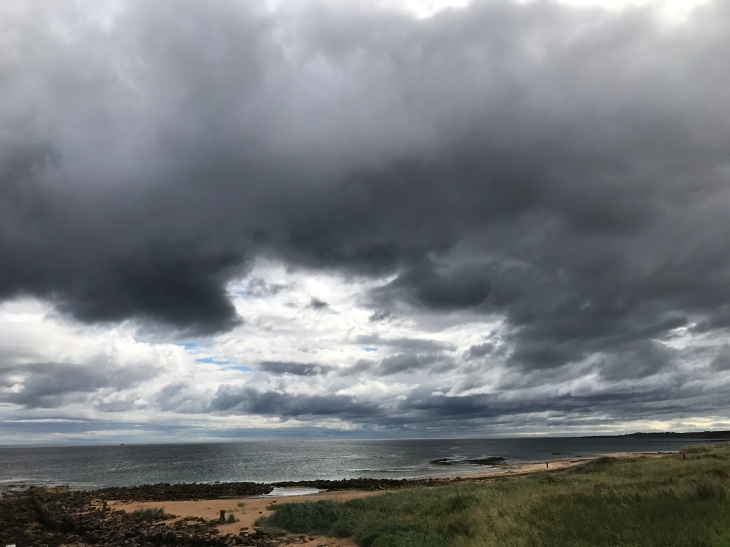 A storm in St Andrews Bay.
A storm in St Andrews Bay.
This winter the “old grey toun” has experienced a few bad storms in St Andrews bay. The ‘beast from the east’ is not new. Throughout the centuries many a great storm has been recorded.
On the 5th of March 1881 the wildest sea storms and snow storms on record hit the east coast of Scotland. No fewer than 30 vessels were wrecked that day. Heavy snow storms and a raging East-South-Easterly gale was blowing in St Andrews bay. It was the day of the annual Kate Kennedy Procession, the oldest historical pageant held in Scotland. The Procession goes back to the 15th century, to the adoration by the university students of the niece of Bishop Kennedy (1408–1465), the founder of St Salvator’s College. The Bishop’s niece was Lady Katharine Kennedy, affectionately known as Kate, the fairest and most beautiful woman in her day. The first procession since 1874, thousands of students and locals gathered on the streets of St Andrews to watch the pageant which assembled outside the Cross Keys in Market Street at 11:30 that morning.
 The Keys Bar.
The Keys Bar.
About one ‘o’ clock the boom of the signal cannon on Kirk Hill was heard. The Norwegian 98-ton registered schooner Harmonie, from Falkenburg to Bo’ness with a cargo of pit props, was being driven ashore in a horrendous gale. The vessel was dangerously close to the rocks at the back of the Public Baths (now Castlecliffe). Luckily the schooner managed to steer away from the rocks and ran ashore on the sands 200 yards to the north of the Swilcan Burn on the West Sands. The lifeboat and rocket apparatus were on scene and rescued the crew of four men and a boy. The vessel became a total wreck and her cargo was carted to the harbour and re-shipped.
 St Andrews castle and behind it lies Castlecliffe.
St Andrews castle and behind it lies Castlecliffe.
No sooner after the rescue of the Harmonie, the signal cannons sounded again at 4:30 in the afternoon. The Sunderland, England, 367-ton, registered barque Merlin bound from Sunderland to Bordeaux with 700 tons of small coals with a crew of 10 men and one boy, was being driven ashore in the gale. When about three quarters of a mile east from the pier head she tried to tack and was nearly round but did not make it and carried on towards the castle. The lifeboat was ready to launch at the West Sands next to the wreck of the Harmonie and the rocket apparatus team in readiness at the north end of Castle Street.
At 5:30 that afternoon the Merlin, helpless and broadside, struck the rocks 300 yards north of the Public Baths. A rocket line was fired to the ship and successfully grabbed but a huge sea pushed the boat further on to the rocks and the line was lost. Within 15 minutes of striking the rocks the raging sea had turned the vessel into a shapeless mass of broken timbers, iron, masts, spars and sails. 10 men and one woman lost their life that day. Many were washed overboard, and all were drowned. The youngest was a man of 18 years and the oldest a man of 64 years.
In the cemetery at bottom of the Pends, you will see a large light grey coloured headstone. It was erected by the public of St Andrews in memory of the crew of the barque Merlin of Sunderland. There are 10 male names and one female name.
 The gravestone to those lost on the Merlin down at the bottom of the cemetery at the Pends.
The gravestone to those lost on the Merlin down at the bottom of the cemetery at the Pends.
An unknown young St Andrews girl, touched by the disaster, wrote this poem:
“Close by St Andrews rugged shore
A saddening sight we see-
A vessel crushed upon the rocks,
Lashed by the raging sea.
The crew are clinging to the chains,
They cry for help in vain;
The Life Brigade did all they could
To save those drowning men.
One still is left upon the deck,
So youthful, brave and strong;
Haste! Haste! Oh, lifeboat crew, to save,
For there he can’t cling long!
With outstretched arms we see him there,
A mother’s pride and joy;
Oh, God! will you not hear her prayer
To save the sailor boy?
The cruel waves have done their work,
And claimed him as their prey,
While sorrow wrung each pitying heart
Upon the shore that day.
They saw the “Merlin” and her crew–
A band of sailors brave
As ever stood in jackets blue-“






![FullSizeRender[1]](https://neilcunninghamdobson.files.wordpress.com/2017/08/fullsizerender1.jpg?w=730)